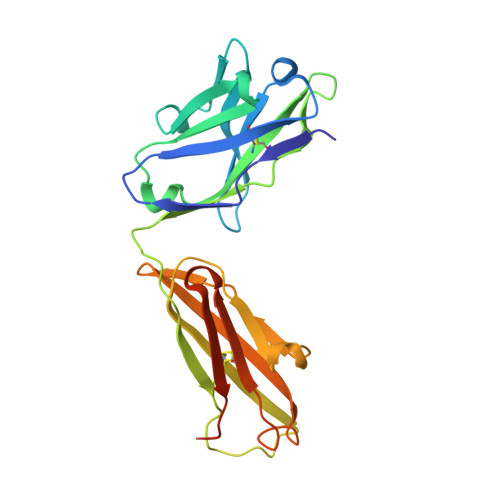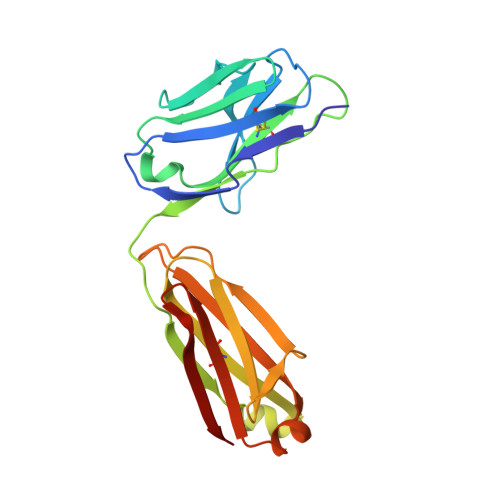Structural Insights Into Antibody Sequestering and Neutralizing of Na+-Channel & [Alpha]-Type Modulator from Old-World Scorpion Venom
Fabrichny, I.P., Mondielli, G., Conrod, S., Martin-Eauclaire, M.F., Bourne, Y., Marchot, P.(2012) J Biological Chem 287: 14136
- PubMed: 22371498
- DOI: https://doi.org/10.1074/jbc.M111.315382
- Primary Citation of Related Structures:
4AEH, 4AEI - PubMed Abstract:
The Old World scorpion Androctonus australis hector (Aah) produces one of the most lethal venoms for humans. Peptidic α-toxins AahI to AahIV are responsible for its potency, with AahII accounting for half of it. All four toxins are high affinity blockers of the fast inactivation phase of mammalian voltage-activated Na(+) channels. However, the high antigenic polymorphism of α-toxins prevents production of a polyvalent neutralizing antiserum, whereas the determinants dictating their trapping by neutralizing antibodies remain elusive. From an anti-AahII mAb, we generated an antigen binding fragment (Fab) with high affinity and selectivity for AahII and solved a 2.3 Å-resolution crystal structure of the complex. Sequestering of the C-terminal region of the bound toxin within a groove formed by the Fab combining loops is associated with a toxin orientation and main and side chain conformations that dictate the AahII antigenic specificity and efficient neutralization. From an anti-AahI mAb, we also preformed and crystallized a high affinity AahI-Fab complex. The 1.6 Å-resolution structure solved revealed a Fab molecule devoid of a bound AahI and with combining loops involved in packing interactions, denoting expulsion of the bound antigen upon crystal formation. Comparative analysis of the groove-like combining site of the toxin-bound anti-AahII Fab and planar combining surface of the unbound anti-AahI Fab along with complementary data from a flexible docking approach suggests occurrence of distinctive trapping orientations for the two toxins relative to their respective Fab. This study provides complementary templates for designing new molecules aimed at capturing Aah α-toxins and suitable for immunotherapy.
- Faculté de Médecine Secteur Nord, Centre de Recherche en Neurobiologie-Neurophysiologie de Marseille, CRN2M, CNRS/Aix-Marseille Université UMR-6231, Institut Fédératif de Recherche Jean Roche, CS80011, F-13344 Marseille cedex 15, France.
Organizational Affiliation:

















